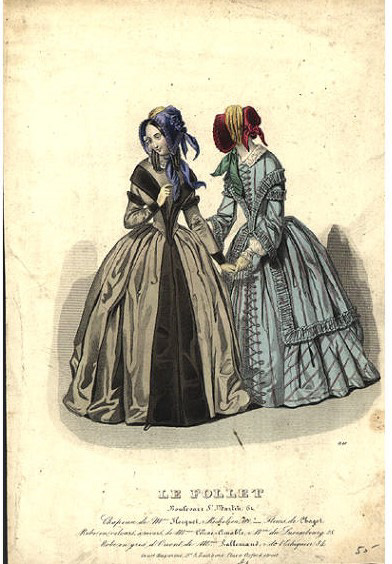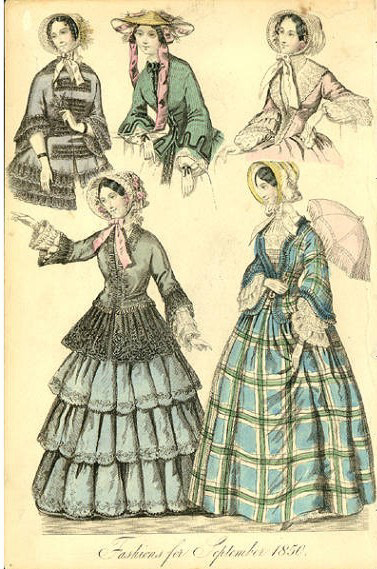In the 1850’s it was not acceptable for women to wear pants in public. Women were expected to wear corsets that created an hourglass figure and many petticoats that would help make the dress fuller. The skirts of the dresses were as wide as possible, reaching a maximum circumference of fifteen feet. These huge skirts were difficult to move around in and were restrictive. Women were expected to wear these inconvenient dresses, and in the 1850s there was a reform movement to allow women to dress more practically.
Not only were these styles inconvenient to wear but they are also harmful to the body. The dress reform reevaluated how women’s clothing affected their bodies and social lives. The movement became important for the health and comfort of women. Everyday women were expected to wear dresses with “low waistlines, wide sleeves and full skirts.” The dresses also had corsets which were “made of whalebones that created an hourglass shape by compressing the waist.” Such dresses were detrimental to women’s health. The goal was for women to wear as many layers of clothing as possible “designed to accentuate their figures while covering as much skin as possible.” Women wore clothing that badly affected their health to try to get the shape that was in style. For the reformers fashion was a symbol and major cause of women’s political and economic oppression.
The convenience and comfort of the shorter dresses, while significant, did not compare to the h
Health improvements realized by doing away with “small waist and whale bones and being allowed breathing room.” There were health hazards to wearing whale boned corsets, including strained stomach muscles, bruised ribs and compressed organs. The corsets “made breathing a challenge and women often fainted” from wearing them. The clothing was so constrictive that it was impossible “to do much more than small crafts held in the lap.” The tight dresses imprisoned and crippled women. Women could not move around properly and were reduced to a state of dependence This style of clothing was not particular and it harmed the body, these problems helped inspire the dress reform.
Health improvements realized by doing away with “small waist and whale bones and being allowed breathing room.” There were health hazards to wearing whale boned corsets, including strained stomach muscles, bruised ribs and compressed organs. The corsets “made breathing a challenge and women often fainted” from wearing them. The clothing was so constrictive that it was impossible “to do much more than small crafts held in the lap.” The tight dresses imprisoned and crippled women. Women could not move around properly and were reduced to a state of dependence This style of clothing was not particular and it harmed the body, these problems helped inspire the dress reform.


